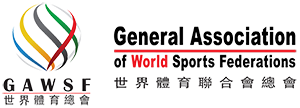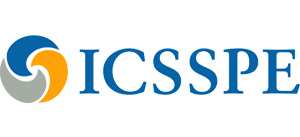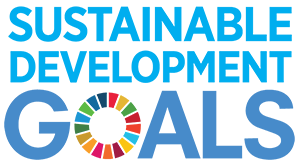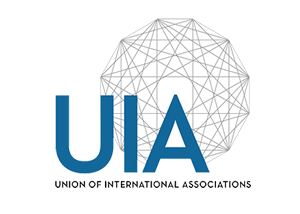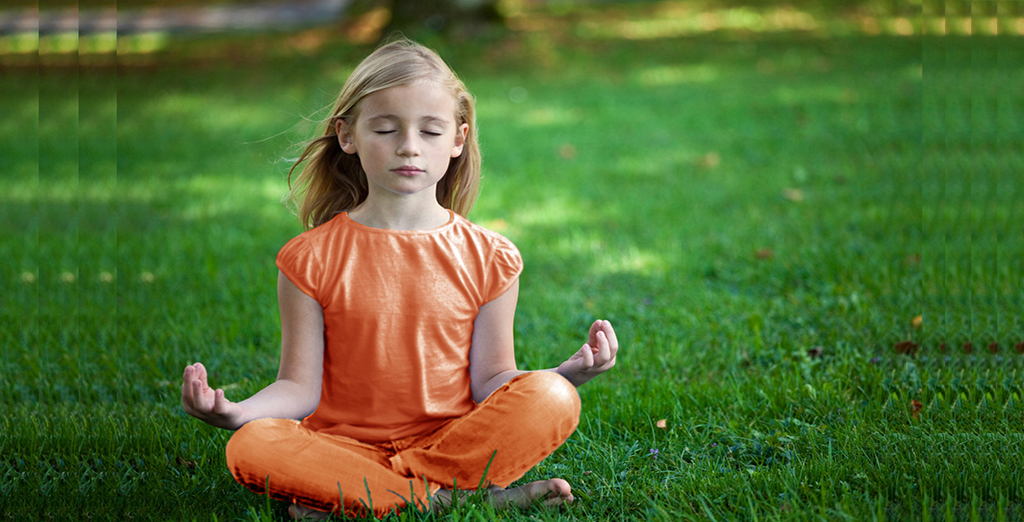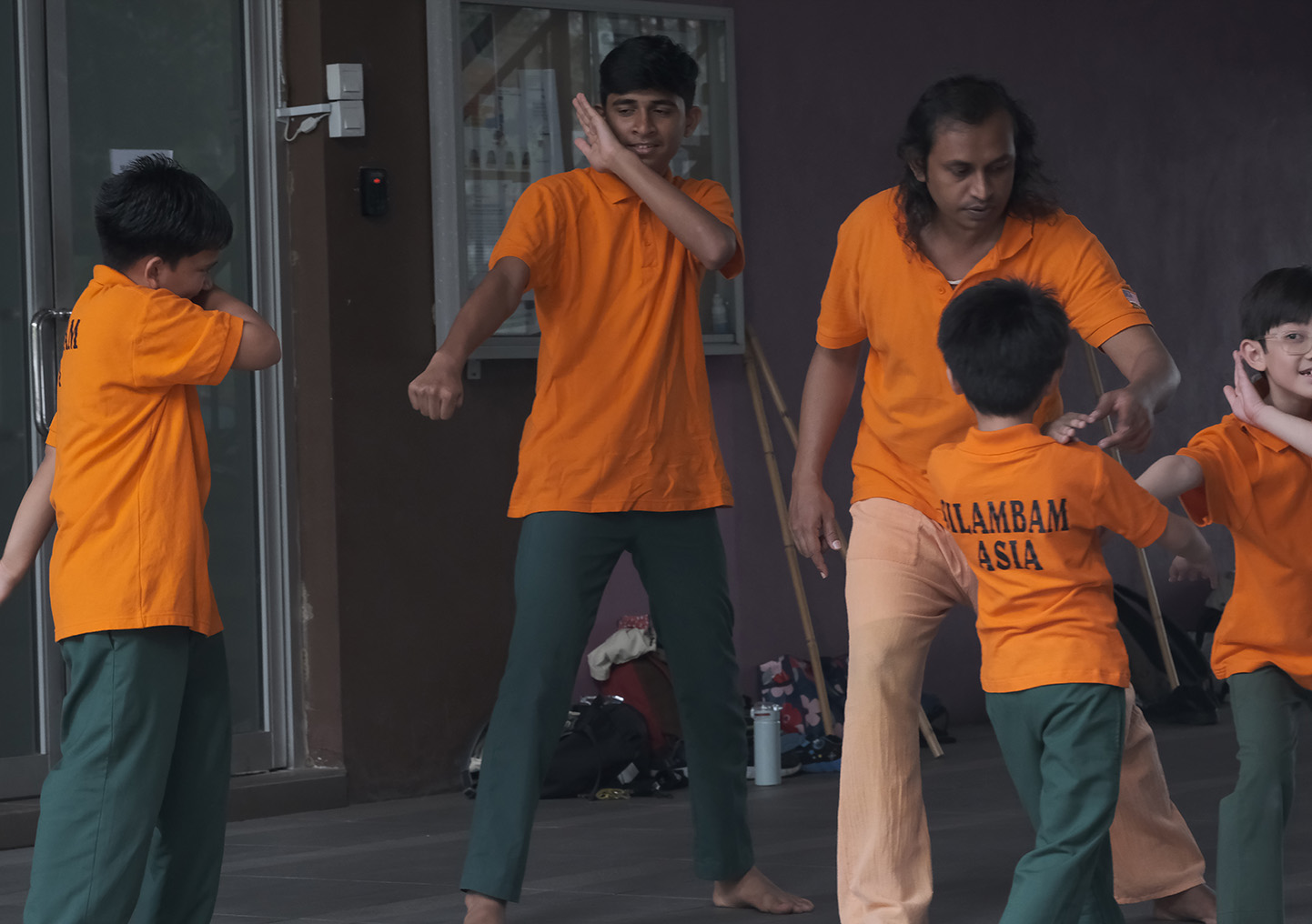
Silambam Mastery
Remedies Acne
Remedies Acne
Acne
Published: 22 November 2014
Last Updated: 15 May 2025 04:30 AM (GMT+8)
Bahasa Melayu : Jerawat / Malayalam : മുഖക്കുരു (Mukhakkuru) / Telugu : మోటిమలు (Motimalu) / Français : Acné
Acne Treatment
- Acne affects 60% of youngsters between 12 to 24 years of age
- It causes embarrassment, depression and lack of confidence
Symptoms to look for:
- Whiteheads
- Blackheads
- Pimples
- Red and itchy rashes
Causes:
The body is unable to remove toxins through excretion leading to contamination of the bloodstream. This can be due to :
- Constipation
- Irregular bowel movement
- Irregular meal timings
- Excess starch, sugar, oil and fat consumption
Natural home remedy for acne using garlic:
- Garlic contains allicin, which is a natural antibiotic
- Take 2-3 garlic cloves
- Crush them to make a paste
- Apply this paste on the affected parts of the skin
- For sensitive skin, mix yogurt in the garlic paste before applying
Natural home remedy for acne using garlic:
- Consume three cloves of garlic everyday for 1 month
Natural home remedy for acne using coriander leaves and turmeric powder:
- Take a handful of washed coriander leaves
- Crush them finely
- Place the paste on a sieve and press to extract the juice
- Add a pinch of turmeric powder
- Mix well
- Apply this mixture on the face every night
Acne Natural Treatment - Home Remedies For Acne Treatment
A body without a disease is almost like a cat without a tail. Diseases are evident but knowledge about their prevention and treatment preferably in a natural way is most coveted. But why natural? The answer is very simple. A natural remedy that is often easily available in the vicinity of a house or within it is far less costly and most important of all has no diabolic side effects. Acne is such a disease which can be cured with home remedy.

Acne is a common ailment that bothers teenagers. Typically called pimples, acne is mostly seen on face but can also occur on other parts of the body such as on the neck, back and even shoulders. Its full form is Acne Vulgaris. Sebum produced by the sebaceous glad keeps the skin and the hair on it moist. During adolescence the sebaceous glands get enlarged and they produce excess sebum which encourage fungal growth and is the prime cause of acne.
16 Easy Natural Acne Treatments & Home Cure for Acne That Works
■ Acne treatment using vitamin – vitamin A as well as Niacin is very effective in the treatment of Acne. Foods that are rich in such vitamins and niacin are very good for acne treatment. Spinach, broccoli, , celery, asparagus, mushrooms are some of the chief sources of niacin. Liver with pepper, lemon juice and olive oil can be used as bread spread for sandwich.
■ Using zinc for Acne treatment – Treatment of Acne using Zinc is the latest of the treatments although results might vary from person to person. Wheat germ, cashew nuts pecan nuts and pine nuts crushed in a grinder and sprinkled on a salad is a very effective source of zinc.
■ Orange Peel is also a good remedy for Acne treatment – Crushed orange peel with water base applied on acne is effective. Face scrub made of orange peels and gram flour is also effective.
■ Lemon juice in Acne treatment – Lemon juice applied regularly on acne reduces it effectively. The Vitamin C in it does the trick. Lemon juice mixed with same amount of mint will also reduce inflammation.
■ Garlic as medicine for Acne – one of the best medicines for acne is garlic. Garlic rubbed on the acne more than once in a day clears the rigid of the acne problems. Three pods of raw garlic eaten once a day regularly for a month cleanses the blood of all its impurities and thus help reduce and prevent acne problems. Garlic juice mixed with yogurt can also be applied. Allicin the natural antibiotic in garlic does the trick. Yogurt again contains a number of vitamins and fatty acids that helps the skin to maintain moisture but without making it oily.
■ Coriander and Mint used together is good for Acne treatment – Coriander juice to which a pinch of turmeric is added is a very effective home remedy for acne. It should be applied at night after washing the face thoroughly. It must be kept overnight.
■ Fenugreek paste – A paste of the fenugreek leaves when applied on the acne and left over night and then washed away with warm water in the morning not only prevents acne but blackheads too.
■ Cucumber as home remedy – Cucumber applied to the face in a grated form and left for twenty minutes and then washed of has been found to be a good home remedy for acne.
■ An effective face pack for acne treatment - A face pack using fuller's earth and a little portion of apple cider vinegar should be made. This paste when applied on the face is very effective remedy. If steam is applied to the face before application it is more helpful.
■ Hot water Enema – Enema taken daily with hot water helps cleanse bowel and detoxify body and in the process helps reduce acne.
■ Epsom salt – A bath in hot water to which Epsom salt is added twice a week is effective in acne treatment. The patient should be in the bath tub for at least half an hour and then allow the body to cool gradually.
■ Using oils having anti fungal properties – Oils such as the clove oil, oil from oregano, the tea tree oil have all anti fungal properties. When applied on the skin they combat bacterial infection and thus reduce acne.
■ Honey and oatmeal - Honey and oatmeal combination as breakfast cereal is again a very effective anti acne treatment.
■ A mixture of turmeric and sandalwood powder in a little water base when applied to the affected area clears acne effectively.
■ One teaspoon full of cinnamon powder mixed with three tablespoons full of honey and applied over acne overnight and thereafter washed with warm water is very effective. Two weeks of treatment permanently removes and clears acne.
■ Paste of Nutmeg and unboiled milk applied to the affected area is also good.
Acne Causes & Symptoms - Treatment For Acne
Scientifically referred to as 'Vulgaris', acne is a disease affecting the skin. Emerging as oily follicles on scaly red patches, acne can be of various kinds. Blackheads, whiteheads, pinheads and papules are the various kinds of acne. Though chest, armpits, groins, buttocks and back are also affected by these lesions called acne- the most affected part happens to be the face.
Causes of Acne - What Causes Acne?
■ They are mostly caused owing to the changes in polysebaceous contents of the skin structure.
■ Increased level of testosterone during puberty also leads to acne.
■ heightened activity of the sebaceous gland, on account of its enlargement, and on stimulation by androgen released in excess also contributes to the formation of acne.
■ Acne forms when the follicle of skin is blocked by excess secretion of oil or sebum.
■ A bacterium by the name of 'commensal' may also lead to the development of acne. It may also develop owing to the infection caused by an aerobic bacterium by the name of 'propeoni'.
■ Besides the genetic hormonal causes; genetic reasons are also responsible, with strains susceptible to acne being a common feature of family heredity.
■ Scientific research has also shown the relationship between emotional stress and acne.
■ Diet rich in fat or 'glycemic' content is also responsible for acne.
■ Excess of dandruff may lead to the development of acnes.
■ Excess use of oily or grease based foundation or cosmetic may also be responsible for causing acnes.
■ Acne can also develop as side effects of drugs taken in forms of steroids and hormones.
■ Malfunctioning of thyroid gland may also be another responsible factor aiding the growth of pimples.
Acne Symptoms - Various Symptoms of Acne
■ The skin affected by acne becomes scaly and red.
■ They appear as small dots of inflammations.
■ They create scary marks on the skin. The scary marks which occur as a result of inflammation may take on varying forms including deep, angular or the one appearing as wavy marks.
■ In severe cases of acne, the marks of scar remain perennially.
Different types of Acne
■ Acne may appear as blackheads, whiteheads, in shapes of pins, papules and nodules.
■ It can typically look like an enlarged cyst or inflammation. Acnes taking on a cystic form are usually painful.
■ Cystic acne may appear on chest, neck, trunk, back and shoulders.
■ Acne may further be divided into inflammatory and non inflammatory kinds.
Effects of Acne on Skin
■ The most common effect of acne is that it leaves marks of scar on the area affected.
■ Usually affecting both males and females during adolescence, children and seniors are generally not affected by acne.
■ Sometimes the embarrassingly thick scary patches may lead to psychological distress and anxiety.
■ It may add to the social insecurity of the teen agers.
■ Acne may further be divided into inflammatory and non inflammatory kinds.
Acne Diagnosis - How to Diagnose Acne
There are various techniques or yard sticks whereby acne may be diagnosed. The principal of them includes :
■ Leeds technique of acne grading by virtue of which acne may be divided into inflammatory and non inflammatory kinds.
■ Cook's scale makes use of photograph's to assess the severity or intensity of acne. Using a scale beginning from zero to that of eight, Cook's scale assesses the different levels of severity.
■ By way of Pillsbury scale; acne is differentiated on grounds of severity from zero to four; with zero being least severe and four being the maximum one.
Acne Treatment - Various Treatment for Acne
■ Acne can be treated with the help of antibiotics.
■ Both topical use and consumption of antibiotics can be prescribed.
■ Acne can be treated with 'Benozyl peroxide'
■ According to the level of intensity, certain antiseptic and antiseborreic medications in salicylic, alpha hydroxyl and azelaic acids are prescribed.
■ Topical use of 'Mandelic acid' is often prescribed and as such it has been found to be significantly beneficial.
■ Anti inflammatory gel in forms of Nicotinamide and Vitamin B are prescribed.
■ As part of treatment of acne, use of phototherapy is also in vogue. By way of phototherapy, acnes are exposed to red and blue light. The resulting exposure leads to the emission of radicals which ultimately lead to the extinction of acnes.
■ In extreme cases laser surgery leading to the burning away of follicle sac, is made use of.
Self Care to Prevent Acne and Reduce Acne Effect
■ Self care involving thorough cleansing of make-up and other dirt and debris is important as far as eradication of acnes is concerned.
■ For a person afflicted with it, he/she should be particularly careful about not itching or scratching them as that will end up enhancing the inflammation.
■ Even fingering or touching of acnes should be avoided.
■ Diet should be free from food items high in oil content, rather balanced meals enriched with sprouts and fibers should be taken.
■ Care and discretion should be exercised about the choice of cosmetics; the ones containing chemicals and grease should be avoided. Instead cosmetics based on herbal extracts and moisturizer should be opted for.
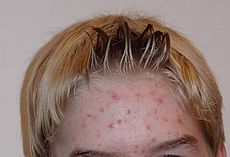
Acne of a 14-year-old male during puberty
Classification |
Notes |
|---|---|
| ICD-10 | L70.0 |
| ICD-9 | 706.1 |
| DiseasesDB | 10765 |
| MedlinePlus | 000873 |
| eMedicine | derm/2 |
| MeSH | D000152 |
Acne vulgaris (or simply acne) is a common human skin disease, characterized by areas of skin with seborrhea (scaly red skin), comedones (blackheads and whiteheads), papules (pinheads), nodules (large papules), pimples, and possibly scarring. Acne affects mostly skin with the densest population of sebaceous follicles; these areas include the face, the upper part of the chest, and the back. Severe acne is inflammatory, but acne can also manifest in noninflammatory forms. The lesions are caused by changes in pilosebaceous units, skin structures consisting of a hair follicle and its associated sebaceous gland, changes that require androgen stimulation.
Acne occurs most commonly during adolescence, affecting an estimated 70-90% of teenagers. In adolescence, acne is usually caused by an increase in testosterone, which occurs during puberty, regardless of sex. For most people, acne diminishes over time and tends to disappear — or at the very least decreases — by age 25. There is, however, no way to predict how long it will take to disappear entirely, and some individuals will carry this condition well into their thirties, forties, and beyond.
Some of the large nodules were previously called "cysts" and the term nodulocystic has been used to describe severe cases of inflammatory acne. The "cysts", or boils that accompany cystic acne, can appear on the buttocks, groin, and armpit area, and anywhere else where sweat collects in hair follicles and perspiration ducts. Cystic acne affects deeper skin tissue than does common acne.
Aside from scarring, its main effects are psychological, such as reduced self-esteem and in very extreme cases, depression or suicide. Acne usually appears during adolescence, when people already tend to be most socially insecure. Early and aggressive treatment is therefore advocated by some to lessen the overall long-term impact to individuals.
Terminology
The term acne comes from ἀκνή, a scribal error for the Greek ἀκμή (akme), literally "point, edge", but in the sense of a "skin eruption" in the writings of Aëtius Amidenus. Used by itself, the term "acne" refers to the presence of pustules and papules. The most common form of acne is known as acne vulgaris, meaning "common acne". Many teenagers get this type of acne. Use of the term "acne vulgaris" implies the presence of comedones.
The term "acne rosacea" is a synonym for rosacea, however some individuals may have almost no acne comedones associated with their rosacea and therefore prefer the term rosacea. Chloracne is associated with exposure to polyhalogenated compounds.
Signs and symptoms
Typical features of acne include: seborrhea (increased oil-sebum secretion), comedones, papules, pustules, nodules (large papules), and possibly scarring. The appearance of acne varies with skin color. It may result in psychological and social problems.
Scars
Acne scars are the result of inflammation within the dermis brought on by acne. The scar is created by the wound trying to heal itself resulting in too much collagen in one spot.
Physical acne scars are often referred to as "ice pick" scars. This is because the scars tend to cause an indentation in the skin's surface. There is a range of treatments available. Although quite rare, the medical condition atrophia maculosa varioliformis cutis also results in "acne-like" depressed scars on the face.
■ Ice pick scars: Deep pits, that are the most common and a classic sign of acne scarring.
■ Box car scars: Angular scars that usually occur on the temple and cheeks, and can be either superficial or deep, these are similar to chickenpox scars.
■ Rolling scars: Scars that give the skin a wave-like appearance.
■ Hypertrophic scars: Thickened, or keloid scars.
Pigmentation
Pigmented scars is a slightly misleading term, as it suggests a change in the skin's pigmentation and that they are true scars; however, neither is true. Pigmented scars are usually the result of nodular or cystic acne (the painful 'bumps' lying under the skin). They often leave behind an inflamed red mark. Often, the pigmentation scars can be avoided simply by avoiding aggravation of the nodule or cyst. Pigmentation scars nearly always fade with time taking between three months to two years to do so, although can last indefinitely if untreated.

A severe case of cystic acne

Cystic acne on the back

Different types of Acne Vulgaris: A: Cystic acne on the face, B: Subsiding tropical acne of trunk, C: Extensive acne on chest and shoulders
Cause
Acne develops as a result of blockages in the follicles. Hyperkeratinization and formation of a plug of keratin and sebum (a microcomedo) is the earliest change. Enlargement of sebaceous glands and an increase in sebum production occur with increased androgen (DHEA-S) production at adrenarche. The microcomedo may enlarge to form an open comedo (blackhead) or closed comedo. Comedones are the direct result of sebaceous glands' becoming clogged with sebum, a naturally occurring oil, and dead skin cells. In these conditions, the naturally occurring largely commensal bacterium Propionibacterium acnes can cause inflammation, leading to inflammatory lesions (papules, infected pustules, or nodules) in the dermis around the microcomedo or comedone, which results in redness and may result in scarring or hyperpigmentation.
Hormonal
Hormonal activity, such as menstrual cycles and puberty, may contribute to the formation of acne. During puberty, an increase in sex hormones called androgens cause the follicular glands to grow larger and make more sebum. Use of anabolic steroids may have a similar effect. Several hormones have been linked to acne: the androgens testosterone, dihydrotestosterone (DHT) and dehydroepiandrosterone sulfate (DHEAS), as well as insulin-like growth factor 1 (IGF-I).
Development of acne vulgaris in later years is uncommon, although the incidence of rosacea, which may have a similar presentation, is increased in older age groups. True acne vulgaris in adult women may be a feature of an underlying condition such as pregnancy, or disorders such as polycystic ovary syndrome, hirsutism, or Cushing's syndrome. Menopause-associated acne (known as acne climacterica) occurs as production of the natural anti-acne ovarian hormones estradiol and progesterone fail, permitting the acnegenic hormone testosterone to exert its effects unopposed.
Genetic
The predisposition for specific individuals to acne is likely explained by a genetic component, which has been supported by twin studies as well as studies that have looked at rates of acne among first degree relatives. The genetics of acne susceptibility is likely polygenic, as the disease does not follow classic Mendelian inheritance pattern. There are multiple candidates for genes which are possibly related to acne, including polymorphisms in TNF-alpha, IL-1 alpha, CYP1A1 among others.
Psychological
While the connection between acne and stress has been debated, scientific research indicates that "increased acne severity" is "significantly associated with increased stress levels." The National Institutes of Health (USA) list stress as a factor that "can cause an acne flare." A study of adolescents in Singapore "observed a statistically significant positive correlation … between stress levels and severity of acne."
Infectious
Propionibacterium acnes (P. acnes) is the anaerobic bacterium species that is widely concluded to cause acne, though Staphylococcus epidermidis has been universally discovered to play some role since normal pores appear colonized only by P. acnes. Regardless, there are specific clonal sub-strains of P. acnes associated with normal skin health and others with long-term acne problems. It is as yet inconclusive whether any of these undesirable strains evolve on-site in the adverse conditions or are all pathogenically acquired, or possibly both depending on the individual patient. These strains either have the capability of changing, perpetuating, or adapting to, the abnormal cycle of inflammation, oil production, and inadequate sloughing activities of acne pores. At least one particularly virulent strain, though, has been circulating around Europe for at least 87 years. In vitro, resistance of P. acnes to commonly used antibiotics has been increasing, as well.
Diet
The relationship between diet and acne is not very clear as there is no good quality evidence. However, a high glycemic load diet is associated with worsening acne. There is also a positive association between the consumption of milk and a greater rate and severity of acne. Other associations such as chocolate and salt are not supported by the evidence. Chocolate however does contain a varying amount of sugar that can lead to a high glycemic load, and it can be made with or without milk. There may be a relationship between acne and insulin metabolism and a dated trial found a relationship between acne and obesity.
Parasitic
Positive associations have been shown with the parasitic mite Demodex however the studies to date do not isolate a cause and it is unclear whether demodex or demodex associated bacteria produces the effects at this time.
Diagnosis
There are multiple scales for grading the severity of acne vulgaris, three of these being :
■ Leeds acne grading technique: Counts and categorises lesions into inflammatory and non-inflammatory (ranges from 0–10.0).
■ Cook's acne grading scale: Uses photographs to grade severity from 0 to 8 (0 being the least severe and 8 being the most severe).
■ Pillsbury scale: Simply classifies the severity of the acne from 1 (least severe) to 4 (most severe).
Differential
Other similar conditions include: rosacea, folliculitis, keratosis pilaris, perioral dermatitis, and angiofibromas among others.
Management
Many different treatments exist for acne including benzoyl peroxide, antibiotics, retinoids, antiseborrheic medications, anti-androgen medications, hormonal treatments, salicylic acid, alpha hydroxy acid, azelaic acid, nicotinamide, and keratolytic soaps. They are believed to work in at least 4 different ways, including: normalising shedding and sebum production into the pore to prevent blockage, killing Propionibacterium acnes, anti-inflammatory effects, and hormonal manipulation.
MEDICATIONS
Benzoyl peroxide
Benzoyl peroxide is a first-line treatment for mild and moderate acne due to its effectiveness and mild side-effects (primarily an irritant dermatitis). It works against the "P. acnes" bacterium, helps prevent formation of comedones, and has anti-inflammatory properties. Benzoyl peroxide normally causes dryness of the skin, slight redness, and occasional peeling when side effects occur. This topical does increase sensitivity to the sun as indicated on the package, so sunscreen should be used during the treatment to prevent sunburn. Benzoyl peroxide has been found to be nearly as effective as antibiotics with all concentrations being equally effective. Unlike antibiotics, benzoyl peroxide does not appear to generate bacterial resistance.
Antibiotics
Antibiotics are reserved for more severe cases and decrease acne due to their antimicrobial activity against P. acnes in conjunction with anti-inflammatory properties. With increasing resistance of P. acnes worldwide, they are becoming less effective. Commonly used antibiotics, either applied topically or taken orally, include erythromycin, clindamycin, and tetracyclines such as doxycycline and minocycline.
Salicylic acid
Salicylic acid helps to lessen acne due to its bactericidal and keratolytic properties. Additionally, salicylic acid can open obstructed skin pores and promotes shedding of epithelial skin cells. Hyperpigmentation of the skin has been observed in individuals with darker skin types who use salicylic acid.
Hormones
In females, acne can be improved with the use of any combined oral contraceptive will all types appearing more or less equal. The combinations that contain third or four generation progestins such as desogestrel, norgestimate or drospirenone may theoretically be more beneficial.
Topical retinoids
Topical retinoids are medications that possess anti-inflammatory properties and work by normalizing the follicle cell life cycle. This class includes tretinoin, adapalene, and tazarotene. Like isotretinoin, they are related to vitamin A, but they are administered topically and they generally have much milder side effects. They can, however, cause significant irritation of the skin. The retinoids appear to influence the cell life cycle in the follicle lining. This helps prevent the hyperkeratinization of these cells that can create a blockage. Retinol, a form of vitamin A, has similar, but milder, effects and is used in many over-the-counter moisturizers and other topical products. Topical retinoids often cause an initial flare-up of acne and facial flushing.
Oral retinoids
Isotretinoin is very effective for severe acne as well as moderate acne that does not improve with other treatments. Improvement is typically seen after one to two months of use. After a single course about 80% of people are improved with more than 50% completely so. About 20% of people require a second course. A number of adverse effects may occur including: dry skin, nose bleeds, muscle pains, increased liver enzymes, and increased lipid levels in the blood. If used during pregnancy there is a high risk of abnormalities in the baby and thus women of child bearing age are required to use effective birth control. Psychiatric side effects such as depression and suicide are unclear.
Procedures
Comedo extraction may help those with comedones that do not improve with standard treatment, at least temporarily. A procedure with high patient satisfaction for immediate relief is the injection of corticosteroids into the inflamed acne comedone. There is no evidence that microdermabrasion is effective.
Evidence for light therapy and lasers as of 2012 is not sufficient to recommend them for routine use. Light therapy is an expensive treatment modality and while it appears to provide short term benefit, there is a lack of long term outcome data or data in those with severe acne.
Laser surgery can be used to reduce the scars left behind by acne.
For people with cystic acne, boils can be drained through surgical lancing.
Alternative medicine
Numerous natural products have been investigated for treating people with acne. Azelaic acid has been shown effective for mild-to-moderate acne when applied topically at a 20% concentration. Application twice daily for six months is necessary, and treatment is as effective as topical benzoyl peroxide 5%, tretinoin 0.05%, and erythromycin 2%. Azelaic acid may cause skin irritation but is otherwise very safe. A topical application of tea tree oil has been suggested.
Prognosis
Acne usually improves around the age of 20 but may persist into adulthood. Permanent scarring may occur.
Epidemiology
Globally acne affects approximately 650 million people, or about 9.4% of the population, as of 2010. It affects almost 90% of people during their teenage years and sometimes persists into adulthood. It is slightly more common in females than males (9.8% versus 9.0%). In those over 40 years old, 1% of males and 5% of females still have problems. Acne affects 40 to 50 million people in the United States (16%) and approximately 3 to 5 million in Australia (23%). It affects people of all ethnic groups, but in the United States tends to be more severe in Caucasians than people of African descent.
History
■ Ancient Egypt and Ancient Greece: Sulfur was used to treat acne.
■ 1920s: Benzoyl peroxide was used as a medication to treat acne.
■ 1970s: Tretinoin (original Trade Name Retin A) was found to be an effective treatment for acne. This preceded the development of oral isotretinoin (sold as Accutane and Roaccutane) in 1980. Also, antibiotics such as minocycline are used as treatments for acne.
■ 1980s: Accutane is introduced in the United States, and later found to be a teratogen, highly likely to cause birth defects if taken during pregnancy. In the United States, more than 2,000 women became pregnant while taking the drug between 1982 and 2003, with most pregnancies ending in abortion or miscarriage. About 160 babies with birth defects were born.
Research
A vaccine against inflammatory acne has been tested successfully in mice, but has not yet been proven to be effective in humans.
In 2007 the first genome sequencing of a Propionibacterium acnes bacteriophage (PA6) occurred which "should greatly enhance the development of a potential bacteriophage therapy to treat acne and, therefore, overcome the significant problems associated with long-term antibiotic therapy and bacterial resistance."
Silambam Asia (SILA) is in official partnership with the United Nations Sustainable Development Goals (UN-SDGS) to preserve and safeguard the Indian traditional arts, sports, cultural, and educational content of Silambam at the international level.
Silambam Asia plays active roles as an international organization for governance and sustainable development in the Indian traditional arts and sports for education, health, fitness, culture, nature, climate change, recreation, and dissemination of all these related information. Thus, it is vital to provide expertise for members by providing training, research, revive, rejuvenate, retain, and restore.
The mission of Silambam Asia is to provide effective international governance by constantly improving technical rules and regulating Silambam competitions or participation in international events or sporting arenas to be recognized as an Olympic and Paralympic sport in the near future.
Silambam Asia - Introduction
Indian traditional arts and sports for education, health, fitness, culture, nature, climate change, recreation, and dissemination.
Video content with development work, achievements and silambam history.
We Support
